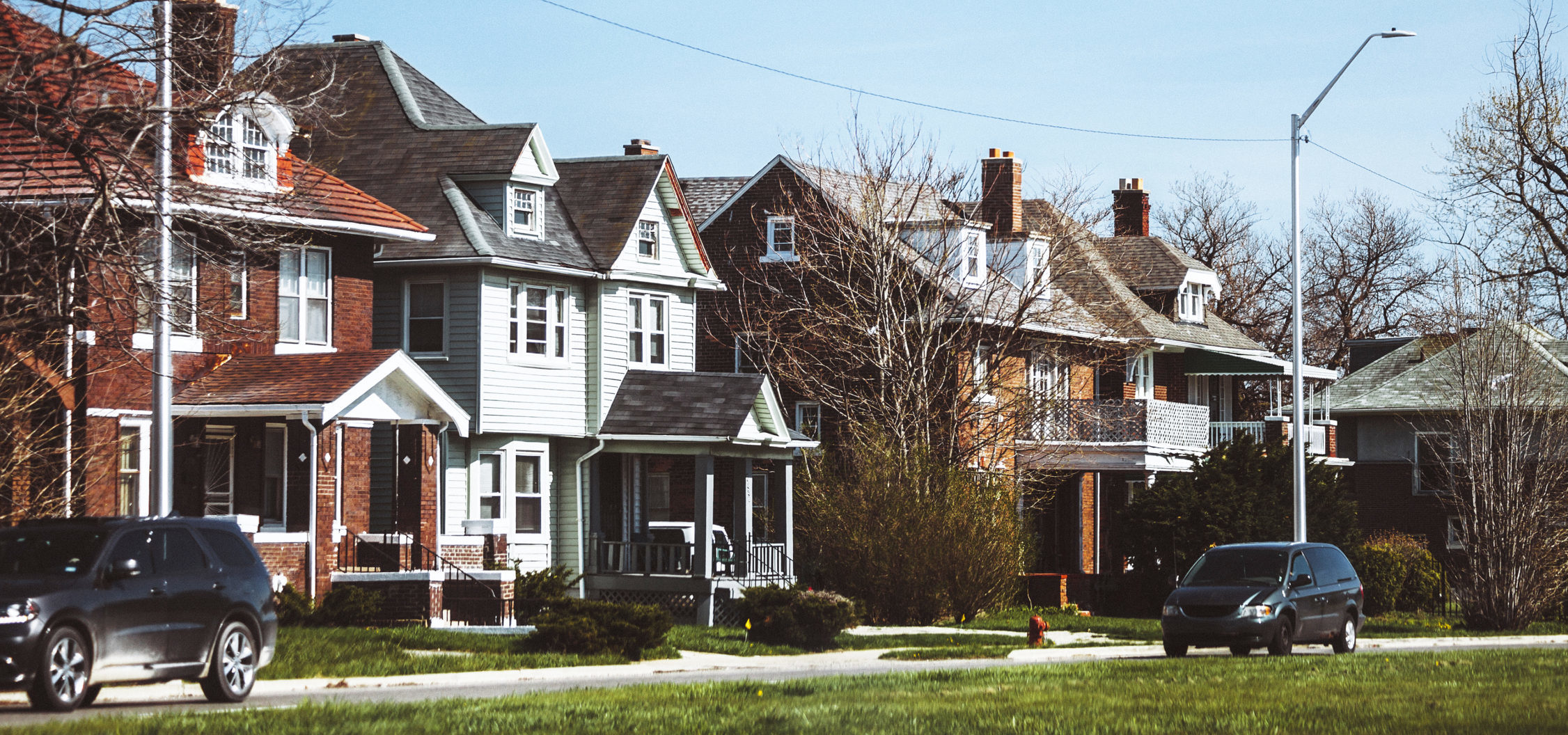By Jason Segedy, Director of Planning and Urban Development for the City of Akron, OH. He is EIG’s inaugural legacy cities fellow. EIG’s Legacy Cities Series is a collection of research and commentary on America’s older industrial cities.
Nearly two decades ago, the concept of “smart decline” gained serious traction in legacy cities, most notably in Detroit and Youngstown.
The concept of “smart decline,” or managed decline, makes some theoretical sense. Since the 1970s, nearly every social and economic trend in the United States has produced significant headwinds for legacy cities and particularly those located in the Great Lakes region. Many people believed those trends would continue indefinitely. If you’re not going to grow, why not be realistic about your prospects and begin to work toward shrinking your footprint by mothballing infrastructure and relocating residents from declining neighborhoods?
So, there is an academic argument to be made that managed decline is a pragmatic approach to present-day economic realities.
There is also an argument to be made that it is fatalistic and that it can become a self-fulfilling prophecy. Even more importantly, a strong case can be made that the idea of “smart decline” hurts the people who live in these cities, and that the tactics that it employs (dismantling neighborhoods and relocating residents) begin to sound a lot like the “urban renewal” of the 1960s that was so catastrophic for these places, and for lower-income Black residents, in particular.
Changing the game in legacy city housing markets
Legacy city mayors, who generally have a much better feel for what their residents need than theoreticians do, have wisely repudiated this idea. Under Mayor Mike Duggan’s leadership, Detroit has rejected “smart decline.” First elected in 2013, Duggan ran under the slogan, “every neighborhood has a future.” He was reelected by a 72 percent landslide in 2017. People have begun to move back to Detroit’s urban core for the first time in several generations.
Detroit still has a long way to go. Even as the core revitalizes, the population loss continues in most of the city’s outer neighborhoods. But there has been an undeniable sea change in terms of people coming to believe that the city can once again be a place where people who have a choice would want to live.
In Akron, Mayor Dan Horrigan, first elected in 2015, has followed a similar trajectory, telling the Washington Post in 2018, “I’m not going to manage my own decline.” Instead, reversing Akron’s 60 year population decline has become the mayor’s lodestar.
In 2016, Mayor Horrigan commissioned Planning to Grow Akron, a comprehensive and wide-ranging examination of the city’s housing market and the condition of its neighborhoods. Many strategies to increase the supply of marketable housing and to drive up demand for living in the city’s neighborhoods were recommended. Foremost among the report’s recommendations was a citywide residential property tax abatement program.
In April 2017, Akron City Council passed legislation establishing a citywide, 15-year, 100% property tax abatement for all new residential construction and for all renovation of existing residential units in excess of $5,000.
The program has been a game-changer. The median sales price of a listed home in Akron has increased from $56,000 in 2015 to $101,000 in 2020, building wealth and equity for existing homeowners. In 2015, only around 10 new residential units were built in Akron—a city which contains around 97,000 housing units. Since 2017, 579 housing units have been constructed or renovated under the tax abatement program, with an additional 1,439 housing units currently under construction or in the planning and design stage.
Cities like Detroit and Akron are demonstrating that legacy city housing markets still have a lot of life left in them, particularly when local leaders take the time to understand the supply and demand fundamentals of the real estate market, to leverage their still-substantial geographic assets, and to compete head-on with their suburban neighbors for people and investment.
These cities need marketable, new, or newly-renovated housing to attract and retain residents. If you don’t build it, they can’t come (or won’t stay). In order to do this, they need incentives to overcome the difficulties of making projects pencil-out in markets where real estate prices are abnormally low.
They also need to focus on creating places where people would want to live, by working tirelessly to improve the day-to-day city services that residents directly experience. If you build it, they still might not come (or still may leave).
Mayor Duggan has focused on basics like street lighting, bus service, and removing vacant and abandoned houses. And in 2017, Mayor Horrigan persuaded Akron voters, by a margin of 70-30, to pass Issue 4, which provided much-needed additional funding for street maintenance, police, and fire protection.
What legacy cities need from national housing policy
The distinction between legacy city real estate markets and those in the nation’s most influential and prosperous places is often ignored, but it is an important one. The reality is that many of the most-frequently discussed housing policy topics, such as displacement by gentrification, middle-class people being priced out of the urban market, and failure to build enough new apartment buildings to accommodate demand due to stringent government regulation, are simply not live issues in most legacy cities.
In the legacy cities of the Great Lakes region, like Detroit, Cleveland, Buffalo, Akron, Erie, and Flint, low property values, the inability to secure financing to build or rehabilitate housing, and a glut of vacant and abandoned properties, rather than financially-crippling housing costs, are the largest and most-pressing real estate challenges. And, unlike superstar cities on the coasts, these cities are inhabited primarily by working-class homeowners living in single-family homes.
The Biden administration’s prospective new Secretary of Housing and Urban Development (HUD), Marcia Fudge, represented large portions of both Cleveland and Akron in Ohio’s 11th Congressional District, which contains some of the most challenged and disinvested legacy city neighborhoods in the nation. With Fudge at the helm, the administration should be well-positioned to understand and address housing challenges in legacy cities.
HUD should augment its Community Development Block Grant (CDBG) by creating new programs specifically geared toward legacy cities. For example, the new programs could help establish housing trust funds, which could leverage additional private and non-profit funds for real estate development, particularly in the often CDBG-ineligible middle neighborhoods which compete with suburban communities for residents and investment.
Affordable housing for low-income renters is a nationwide challenge
At the same time, there are housing policy challenges that legacy cities share with the rest of their counterparts around the nation. One of these is the housing affordability crisis that low-income households are facing.
While legacy city real estate markets, with median housing values that are well-under $100,000, are easily affordable for anyone at just about any income level who can qualify for a mortgage, they are still not affordable for renters at the bottom of the income distribution.
As Alan Mallach points out, just about anywhere in the United States, no matter the housing market, 80 percent or more of all renters earning under $20,000 will be cost-burdened, and most will be paying 50 percent or more of their income on shelter.
The lack of housing affordability for renters at the low-end of the income distribution is an especially difficult problem in legacy cities, despite their bargain-basement sales prices, given the high-proportion of low-income households in these cities. In Detroit, for example, 31 percent of all households earn less than $20,000, as compared to just 14 percent of all households in the United States.
As Mallach goes on to say, unlike strong-market cities, weak-market cities do not have a “middle-class affordability problem,” but they still have a low-income household affordability problem. They often also have a housing quality problem on top of this, due to their aging and often dilapidated housing stock, which results in many lower-income households paying a high proportion of their meager income to live in poor quality housing that is all-too-often rented out by disreputable landlords.
In weak-market cities, house prices may go nearly all the way down to zero before they reach their market level, but rental rates do not work the same way. A house that is worth only $20,000 on the open market will still rent for a minimum of $500 to $700 per month, just so the landlord can cover the cost of owning it, and make at least a small return on investment.
Unlike gentrification, or middle-class people being priced out of the urban market, low-income housing unaffordability is a national problem, affecting legacy cities, superstar cities, and all cities in between.
The existing policy tools to combat unaffordable housing, such as housing choice vouchers, public housing, and the Low-Income Housing Tax Credit are important, but incomplete solutions. The Biden administration should consider additional policy alternatives such as a federal housing allowance to enable more low-income households to find decent housing at an affordable price.
Using the moment
As 2021 unfolds, the future is full of both challenges and opportunities for legacy cities. Ongoing social and economic disruptions in the nation’s superstar cities could prove to be an opportunity for legacy places, as residents, businesses, and investors are now more willing to give them a second look.
The Biden administration must now take a fresh look at the nation’s urban housing challenges, with a careful eye toward legacy places. Working together with Congress, the administration can implement public policy reforms that will do more to foster economic opportunity and urban revitalization in the places that need it the most. The tens of millions of people living in America’s legacy places deserve a better future than “smart decline.”






